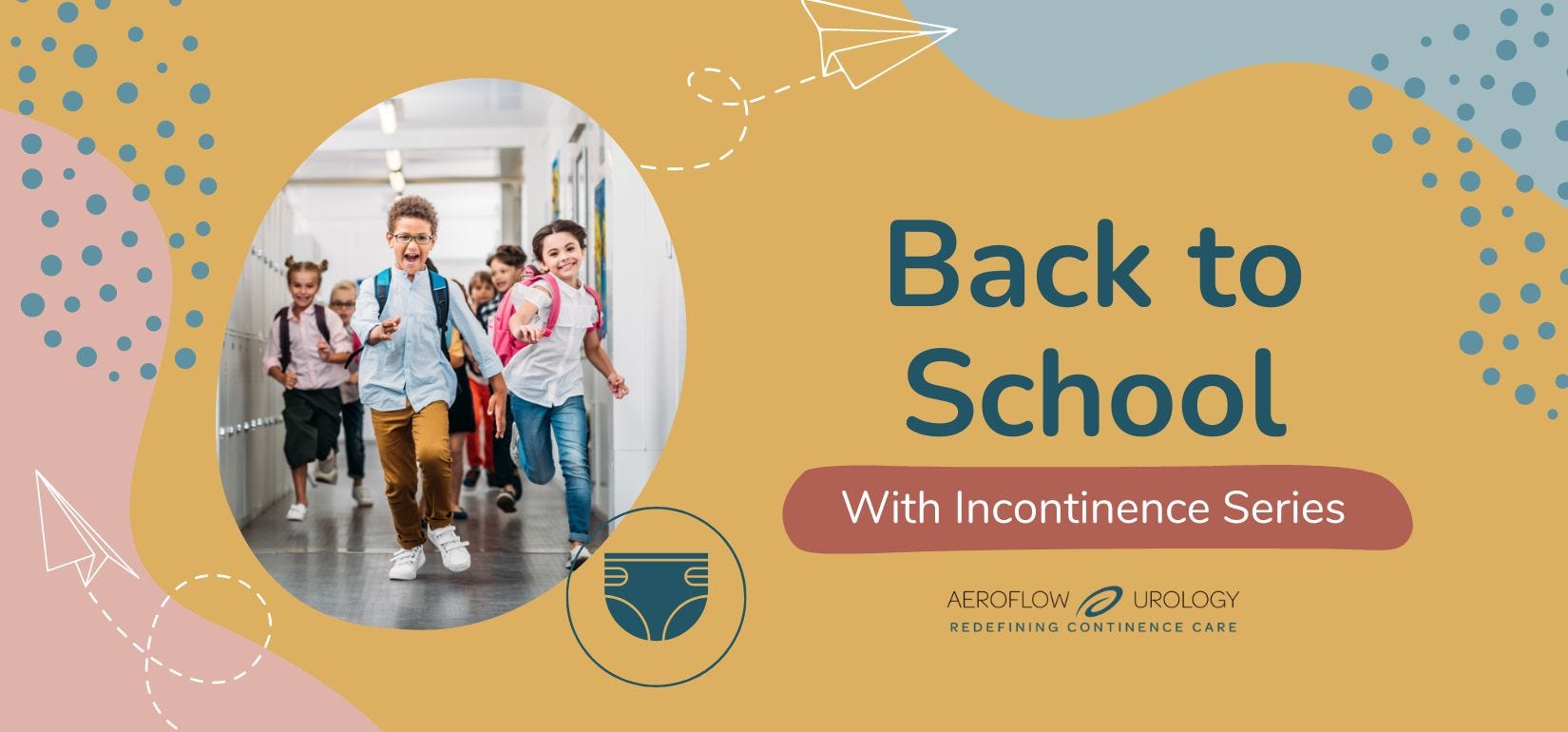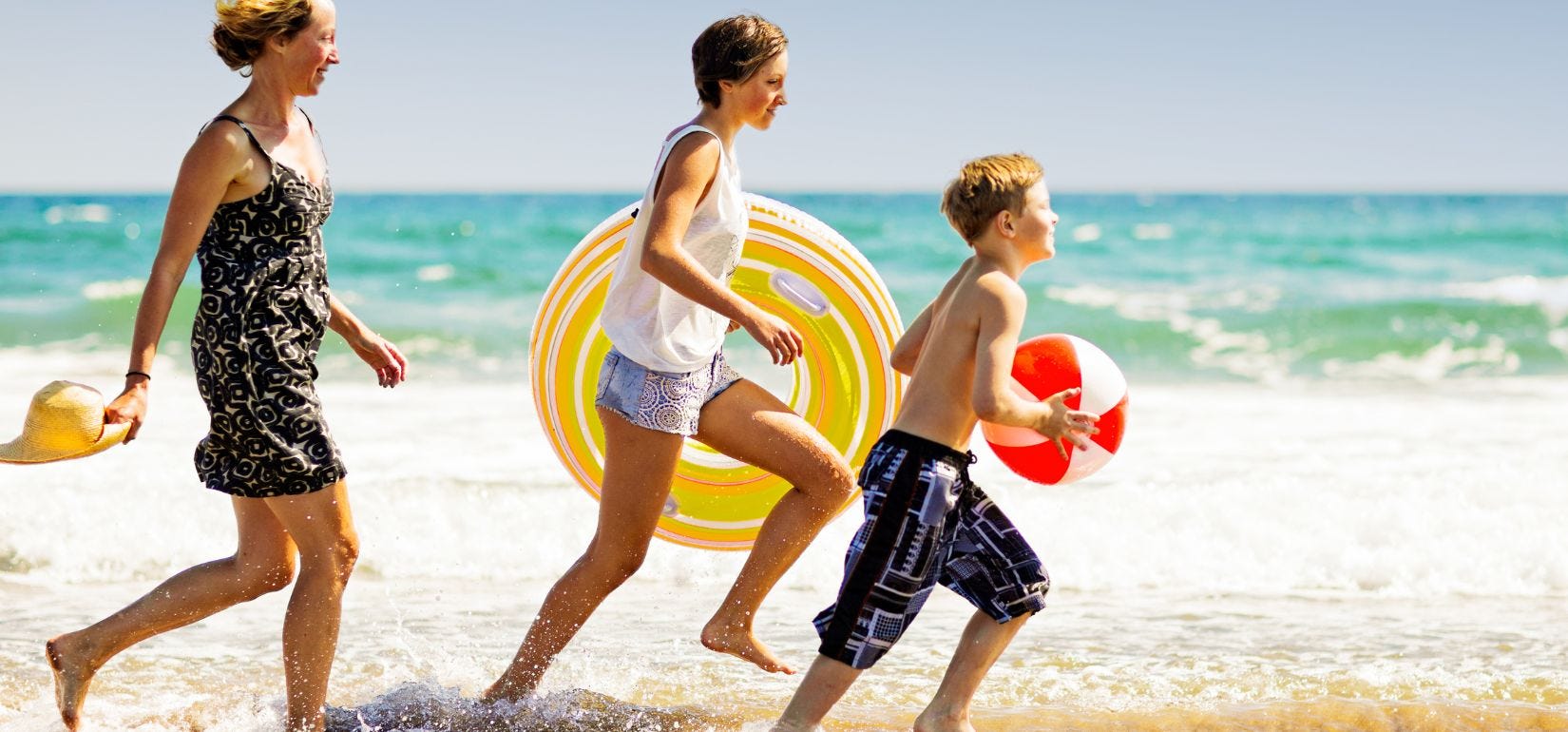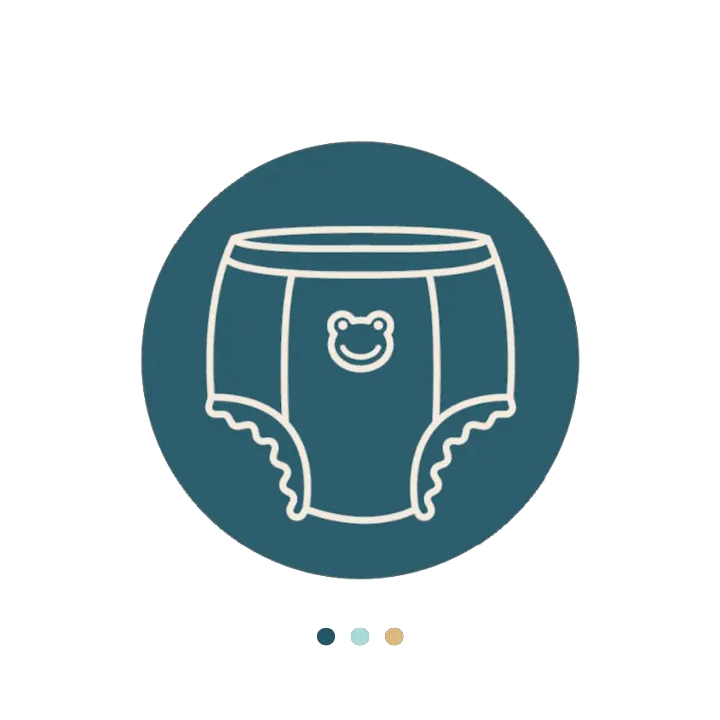This piece has been medically reviewed by Samantha Eaker DNP, CPNP-PC, Medical Advisor to Aeroflow Urology.
New teachers, friends, and schedules during the start of the school year can be a source of excitement for many children. However, for those who struggle with bladder control, starting a new school year can be a source of significant stress and anxiety.
Use the following tips to help your child head back to school with incontinence this year. Plus, get recommendations from real parents of kids with incontinence!
Tips for Sending Your Child Back to School
Use the following tips for sending your child back to school with incontinence confidnetly this year!
1. Contact Teachers
While a child may not want their teacher to know about their urinary incontinence, they can be a major help to your child. During the school year, your child’s teacher is with them most of the time, Monday through Friday. Teachers want your child to succeed, and they can often make accommodations for your child, such as:
Check Your Eligibility
2 Easy Steps
Diapers and pull-ons for children ages 3+ with special needs, available through Medicaid.
- Allowing your child to sit near the door so they can go to the restroom when needed (without having to wait for permission if an urge strikes suddenly).
- Allowing your child to walk down the hallway to the restroom alone.
- Assisting your child with their regular voiding schedule to prevent accidents
- Developing code words with your child for when your child needs to use the restroom or has had an accident.
- Supporting your child and preventing/stopping bullying from occurring.
- Identifying holding postures or other indications that your child needs to use the restroom.
Gym teachers can also accommodate children with incontinence by allowing them to change in the restroom (instead of the locker room) to give your child extra privacy to conceal their incontinence products from their peers.
If you feel nervous approaching your child’s teachers about their incontinence, remember that it is a prevalent condition. Your child likely won’t be the first or only child they have encountered that has needed a little extra help in this area.
We recommend meeting before the school year starts to discuss your concerns with your child’s teacher. It can also be helpful to bring a list of your child’s symptoms and triggers for their teacher’s reference. In this meeting, your child’s teacher may also be able to assist with developing an incontinence plan that will not distract your child from their learning. It is essential to also talk to the school nurse, as they can also be a source of support for your child.
2. Get Back on Schedule Early
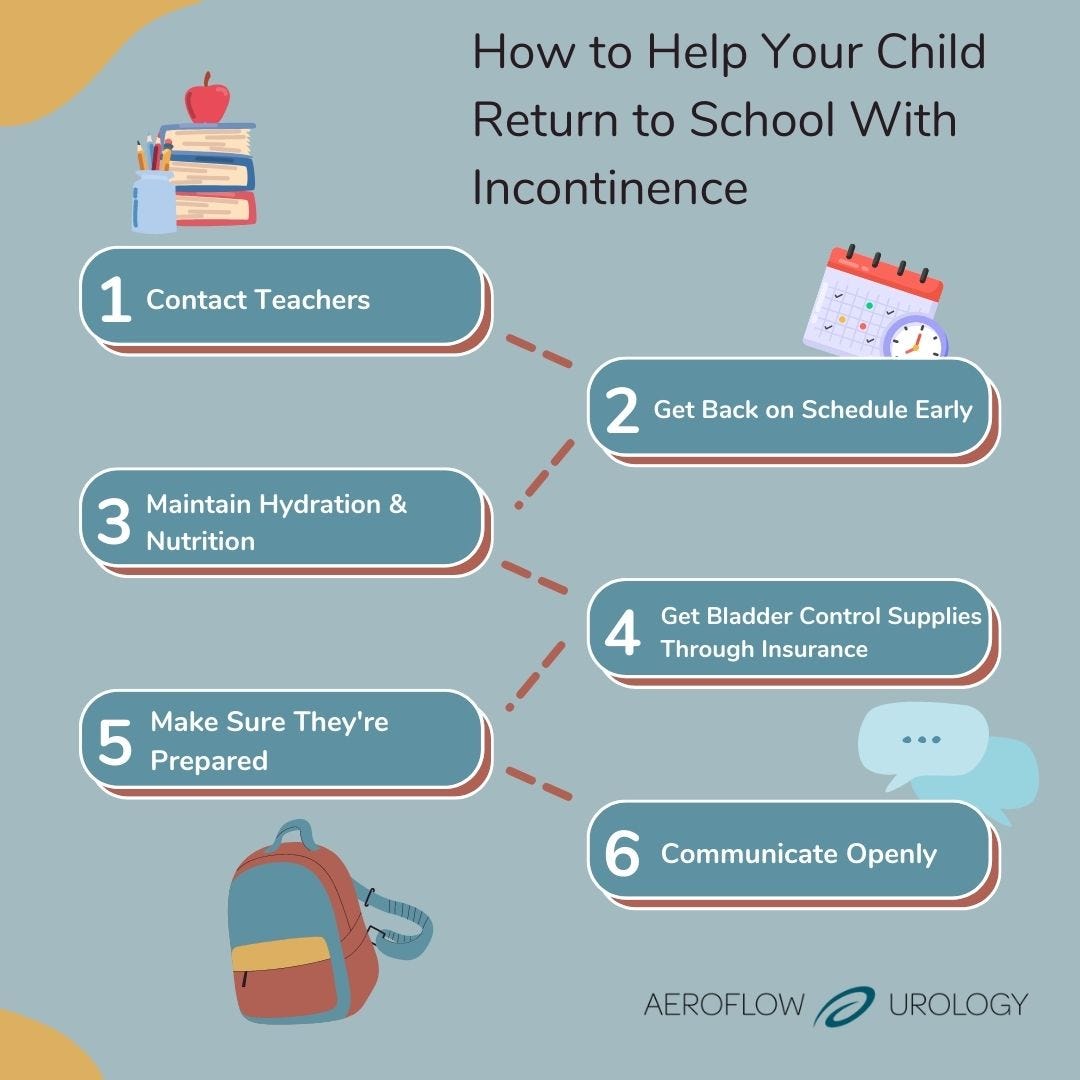

A week or two before school starts, it can be helpful to begin gradually readjusting to a school-appropriate sleeping schedule. Additionally, you can practice setting a bathroom schedule every 1 to 2 hours based on your child’s class schedule and individual needs. If you know when your child will have bathroom breaks during the day, using the restroom at the same time while still at home can be helpful to keep their bladder on track. Anything you can do to recreate the school schedule at home will help adjust to the transition and alleviate some of the stress your child may have.
3. Maintain Hydration & Nutrition
It’s common for people to assume part of incontinence treatment includes reducing water intake. While it may be helpful for your child not to have water before bed, they must stay hydrated during school. Dehydration can make the urine more concentrated, which can worsen incontinence symptoms.
Proper nutrition can potentially help ease incontinence symptoms, as well. For example, packing lunch with healthy snacks that includes plenty of fruits, vegetables, and sources of fiber can allow your little one to get the vitamins and nutrients they need to have healthy urination. Consuming healthy amounts of fiber and maintaining proper hydration can also help prevent constipation, alleviating pressure on the bladder.
4. Get Bladder Control Supplies Through Insurance
Aeroflow Urology may be able to supply your child’s diapers and pull-ups at no cost through their Medicaid plan. In addition, most state Medicaid plans will cover incontinence supplies if diapers or pull-ons are deemed medically necessary due to a specific diagnosis.
If approved, your child will be matched with a dedicated Continence Care Specialist that will ensure they have the best incontinence supplies for their individual needs.


To see if your child qualifies today, fill out our Eligibility Form!
In addition, Aeroflow will check in monthly via phone or email to see if any changes need to be made to your child’s supply!
5. Make Sure They're Prepared
We recommend sending your child to school in clothes that are easy to remove when using the restroom. Sometimes, zippers and buttons can pose a challenge when a child is trying to make it to the toilet quickly. In the case of an accident, we also recommend ensuring they have a change of clothes at school.
Your child will also need properly fitting diapers or pull-ons to prevent leaks and odors effectively. A properly fitting incontinence product is crucial to preventing leaks if your child has an accident. Diaper disposal bags are also a great way to help your child discreetly throw away soiled materials or contain wet clothes until they return home.
Remember, it is essential for children with incontinence to remain clean to prevent discomfort or infections. We also recommend sending your child to school with wipes for quick and easy cleanups. The school’s nurse may also be able to hold extra incontinence supplies for your child, such as extra diapers, pull-ups, or wipes.
Here’s a quick packing list for sending your child to school this year:
- Extra underwear.
- Extra pants and shirts.
- Incontinence supplies, such as diapers, pull-ups, or bladder pads.
- Gloves and wipes.
- Reusable water bottles.
- High-fiber and nutritious lunches.
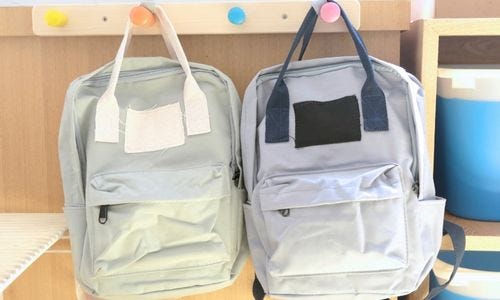

6. Communicate Openly
Talking honestly and transparently about your child’s school day and their incontinence can help you to identify triggers or solutions to problems such as bullying, accidents, and feeling ashamed about incontinence. Be sure to let your child know that incontinence is common and it’s nothing to be ashamed of!
Advice From Real Parents
Read some advice on sending your child back to school from parents of children with incontinence! Be sure to follow us at @aeroflow_urology on Instagram or on our Facebook to leave some of your own advice for newer parents!
“My daughter struggled for several years and still needs to go as quickly as possible when she feels the urge to go. Give clear communication to their teachers about bathroom breaks and possible accidents. Be sure they have supplies on hand to discreetly help your child change clothes if needed. I’ve had these talks with her teachers multiple times every year.”
-Jennifer Blevins
“Talk with the teachers and staff at school and just let them all know what’s going on with your child so they can all be aware and send extra clothes and supplies, too.”
-Aeriel Kimmons
“Add frequent bathroom trips to their IEP, and talk to the teacher about scheduling time to go!”
-@jawajac
“Make sure everyone who teachers them is aware and knows how to support them.”
-@momentsofjoypodcast
“Don’t be embarrassed by incontinence.”
-@boatnerjustin


Information provided on the Aeroflow Urology blog is not intended as a substitute to medical advice or care from a healthcare professional. Aeroflow recommends consulting your healthcare provider if you are experiencing medical issues relating to incontinence.

